Business News Daily provides resources, advice and product reviews to drive business growth. Our mission is to equip business owners with the knowledge and confidence to make informed decisions. As part of that, we recommend products and services for their success.
We collaborate with business-to-business vendors, connecting them with potential buyers. In some cases, we earn commissions when sales are made through our referrals. These financial relationships support our content but do not dictate our recommendations. Our editorial team independently evaluates products based on thousands of hours of research. We are committed to providing trustworthy advice for businesses. Learn more about our full process and see who our partners are here.
How Stagnant Real Wages Hurt Small Businesses
Wage issues combined with inflation impact both existing businesses and would-be entrepreneurs.

Table of Contents
According to U.S. Labor Department data, the U.S. inflation rate for the 12-month period ending in October 2022 was 7.7 percent, with a range of consumer goods soaring in price.
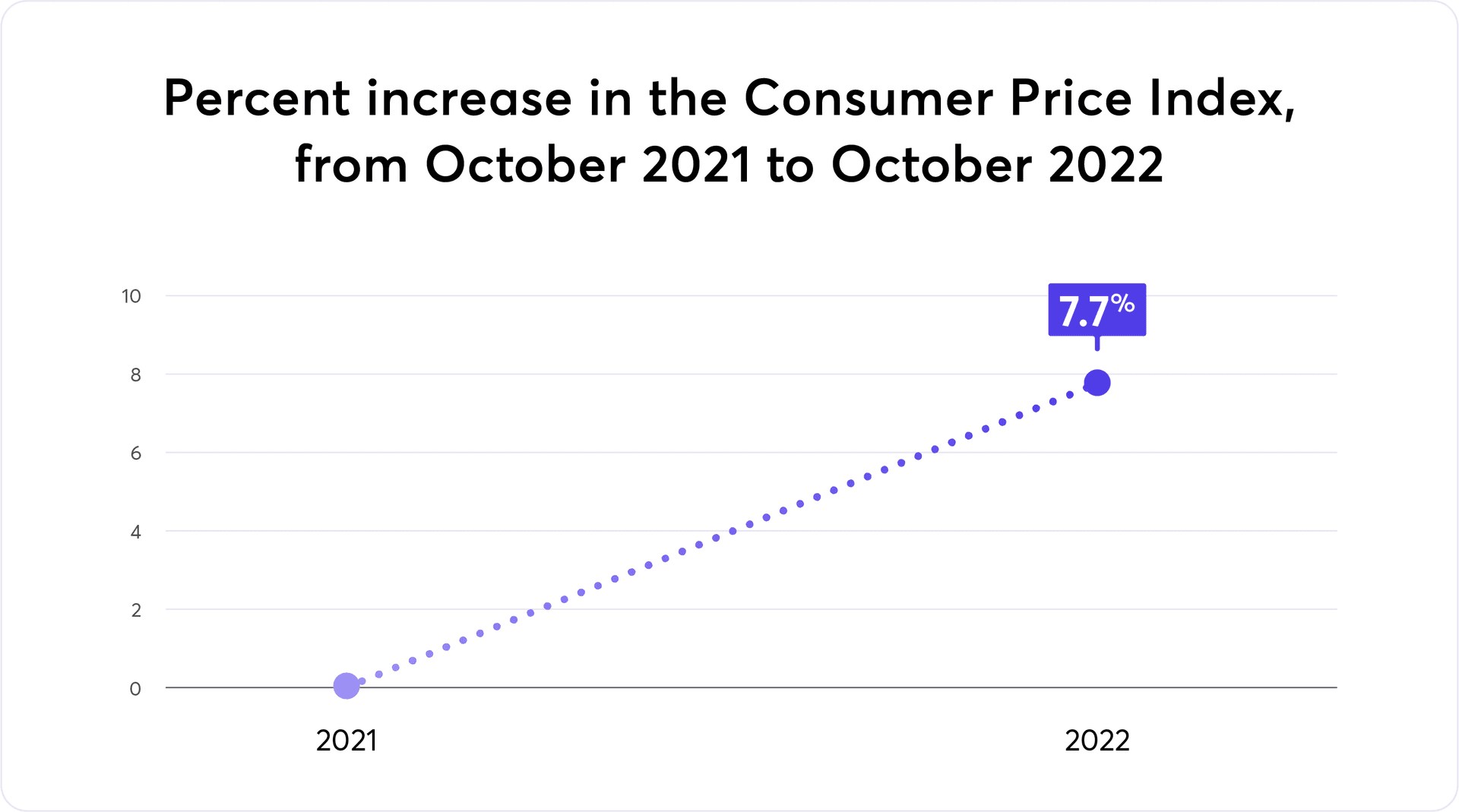
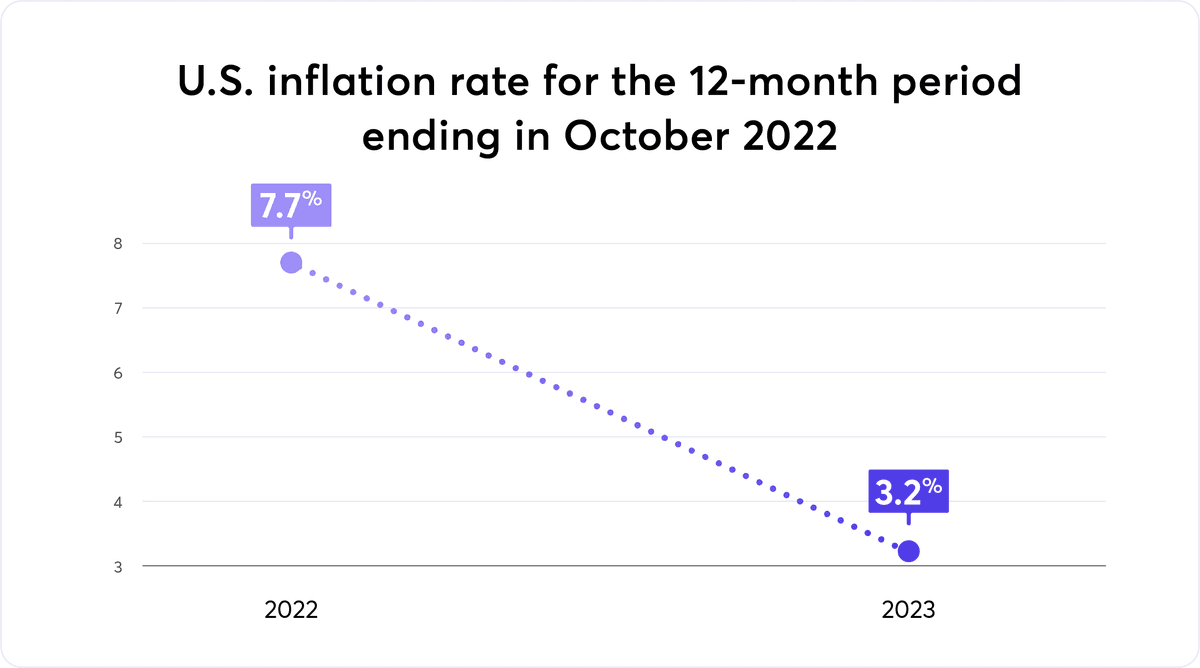
In roughly the same period, a Bankrate survey found that 48 percent of workers reported receiving a pay raise and 21 percent accepted higher-paying roles.
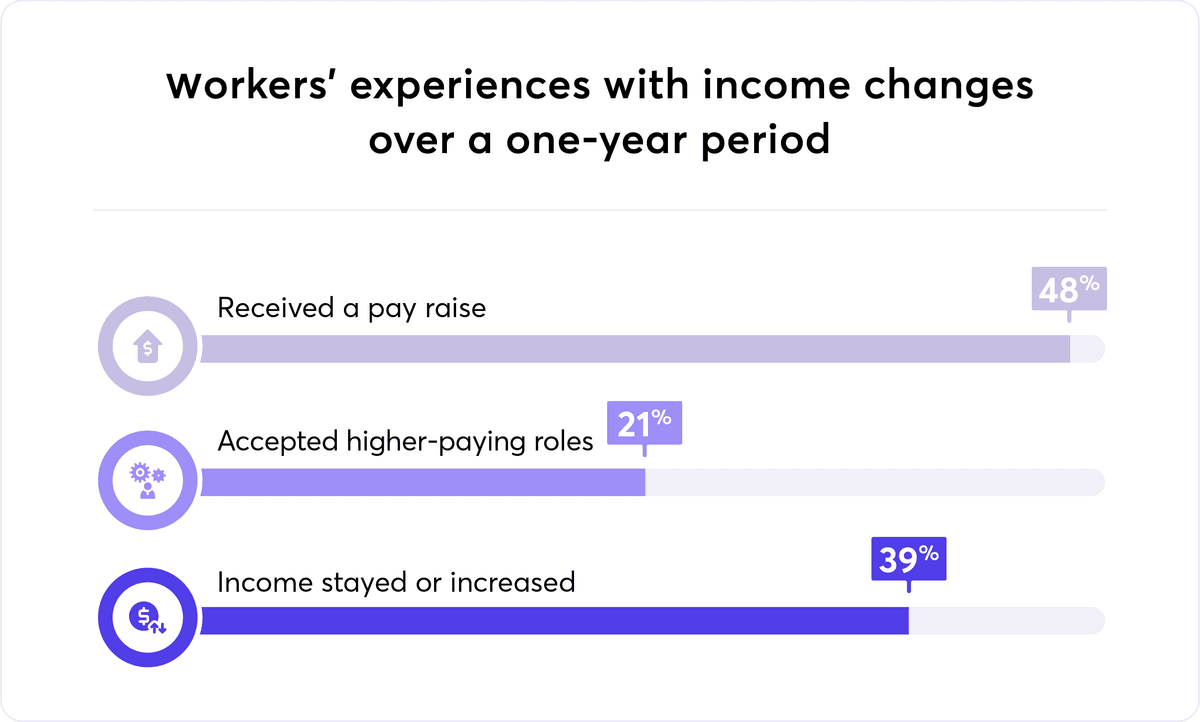
Unfortunately, the additional income has done little to offset rising costs. Only 39 percent of workers who received a raise or secured a new role in a one-year time period reported their income stayed at pace or above increasing consumer costs.
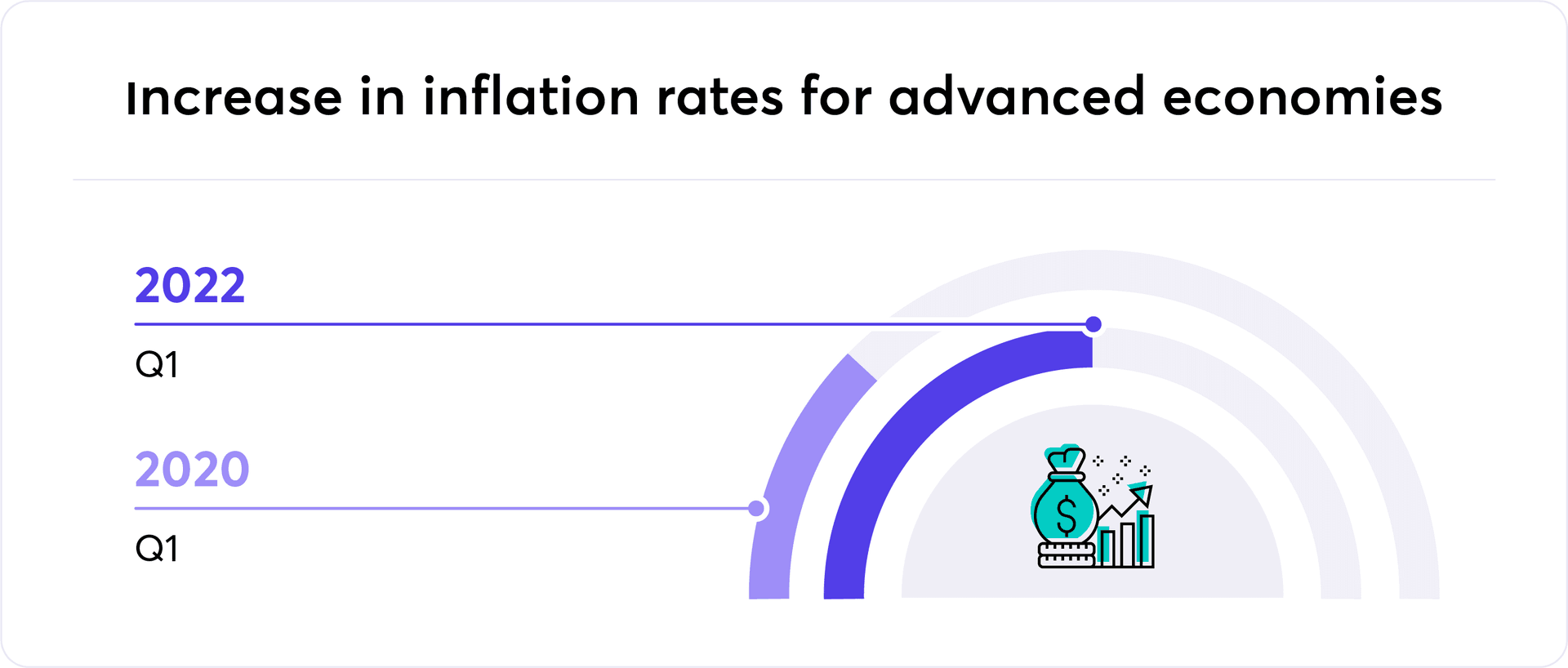
Real stagnant wages are not new, but they are an increasing problem for small businesses in today’s economic environment. With unemployment rates low and inflation high, employees are looking for more. Small companies have the potential to be negatively impacted due to their inability to offer the same career growth, pay increases and benefits as costs rise. As business owners face high interest rates on loans, supply chain issues and a decrease in consumer spending, small businesses may struggle to retain talent, plan for the future and continue moving forward.
Why wages are stagnating
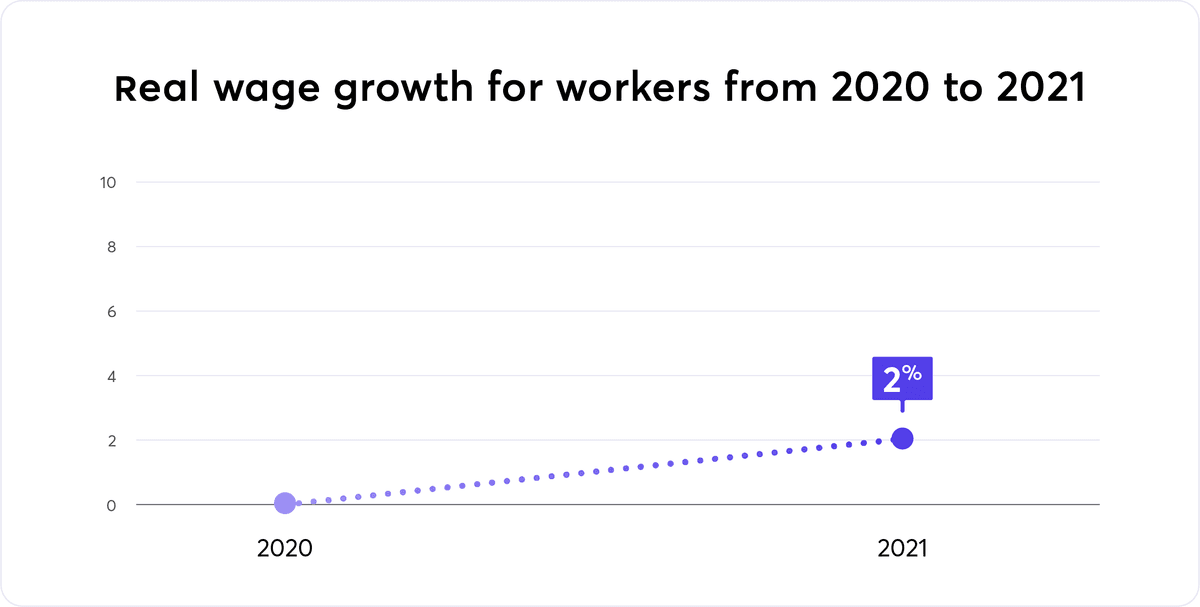
U.S. Department of Labor data indicates that in the first quarter of 2022, wages and salaries grew by 5 percent. However, that growth quickly came to a halt as the year went on and increases were no longer keeping up with inflation. While real wage growth has been fairly stagnant for years, it’s particularly noticeable in today’s circumstances.
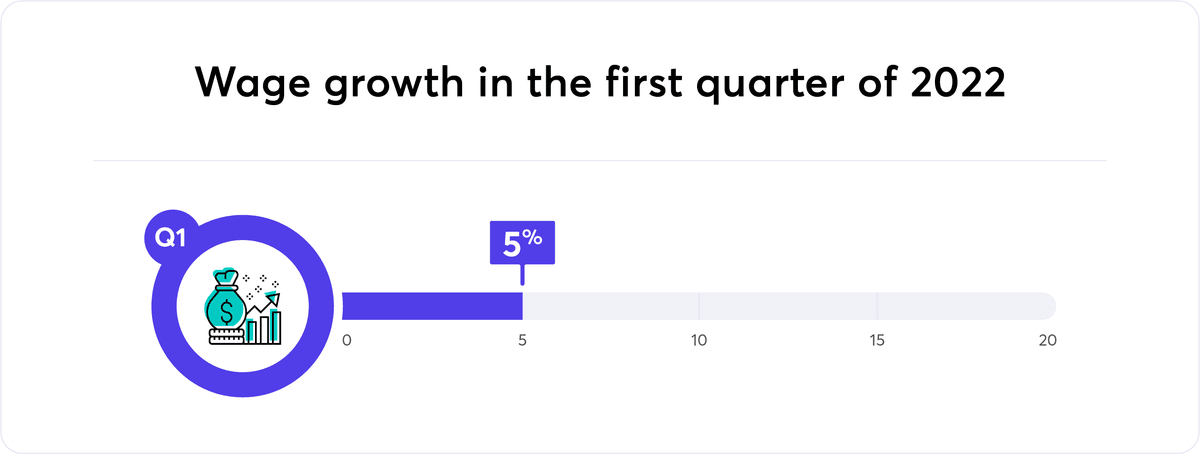
Despite the tight labor market in the U.S. — which is typically associated with higher wages — the majority of workers find that wages continue to fall behind inflation. In the second quarter of 2022, the average decline in real wage growth was 8.6 percent.
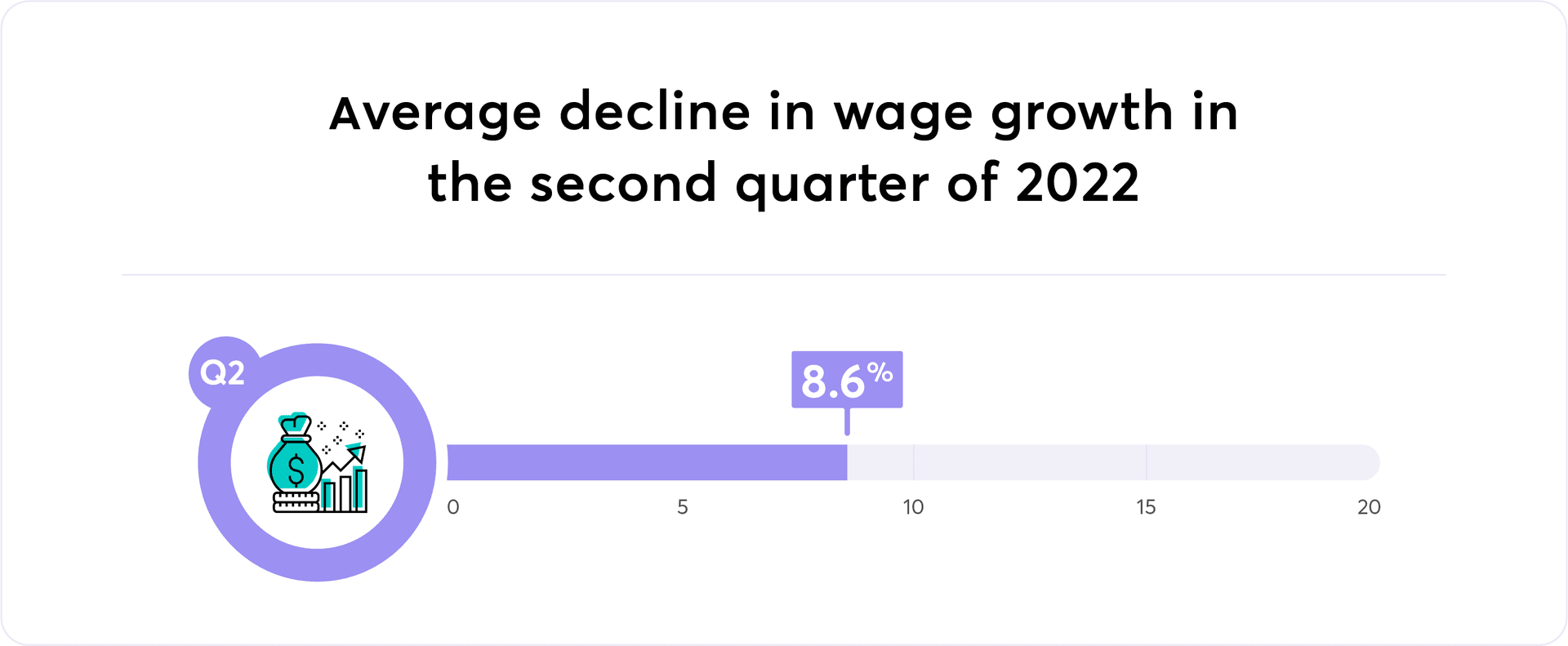
The Federal Reserve has increased interest rates to combat inflation. The October 2022 Consumer Price Index (CPI) rose 7.7 percent over the prior 12 months. Housing, gasoline and food were among some of the most concerning increases. Economists expect these rising interest rates to push the U.S. economy into a broad-based recession — one that is expected to begin in early 2023. By the end of the second quarter of 2023, economists predict that the economy will begin to rebound, but we won’t see the Fed’s goal of a 2 percent interest rate until at least 2024. [Learn how to recession-proof your business.]
How flat real wages impact consumer spending
Dollar for dollar, the average American worker’s hourly wage has risen nearly 10 times since 1964. However, real hourly wages increased by 10.5 percent, a far cry from the nominal increase in wages. Essentially, that means the American worker doesn’t have more cash to spend on essential goods and services.
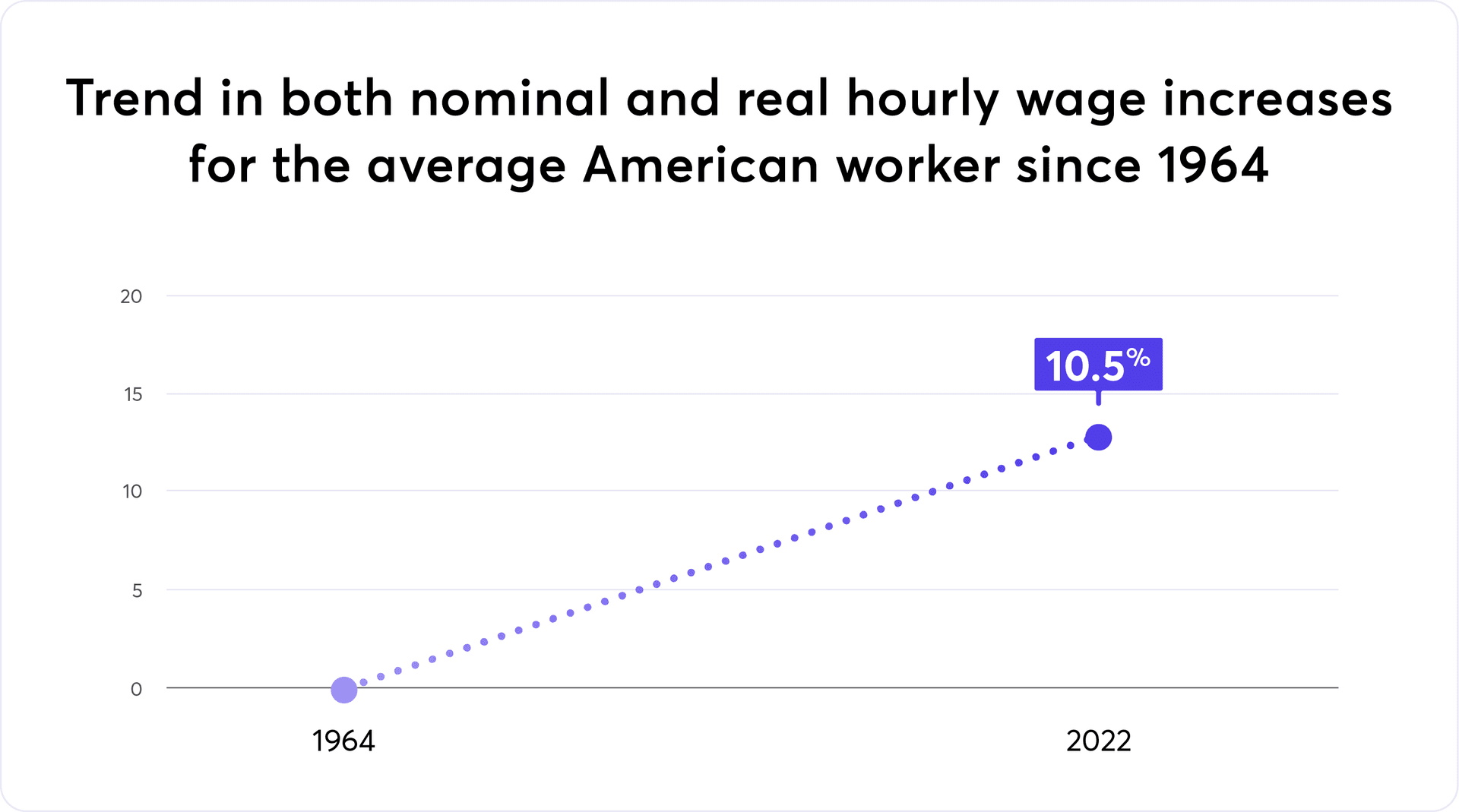
From 2020 to 2021, workers experienced 2 percent real wage growth, according to Brookings research. Since mid-2021, inflation has been higher than real wage growth, however. Consequently, consumers are not likely to spend as much. In a consumer economy, spending drives economic growth and the prosperity of businesses. When real wages are stagnant as inflation rises, many consumers either hold on to their dollars or look for the best deal possible, which often means turning to big businesses that leverage economies of scale instead of patronizing small businesses. [Find out how minimum wage laws affect SMBs.]
How flat real wages and inflation impact small businesses and entrepreneurship
While consumers grapple with an increased cost of living and stagnant wages, businesses face their own challenges thanks to these stalled wages, inflation and associated issues.
Supply chain
Supply chain disruption continues to create problems for businesses. The rising costs associated with gasoline, materials and overall production mean supplies and products are delayed, more expensive, produced slower, difficult to find or completely unavailable. Slow production or a complete lack of product often translates to a decline in revenue. Many companies are also facing increased costs for overhead and inventory. So, while companies may carry a smaller inventory due to supply chain issues, the demand for the most necessary items has not changed, which is also reflected in inflation.
For small businesses, the challenge is bigger than supply chain issues. However, Consumers faced with rising costs have less discretionary income available. A PBS poll conducted in August/September of 2022 showed that 72 percent of Americans cut back on at least one item to meet their monthly expenses in the prior six months. Businesses that supply more “wants” than “needs” face more difficulties reaching typical sales targets. Similarly, companies themselves have less purchasing power due to an increased CPI.
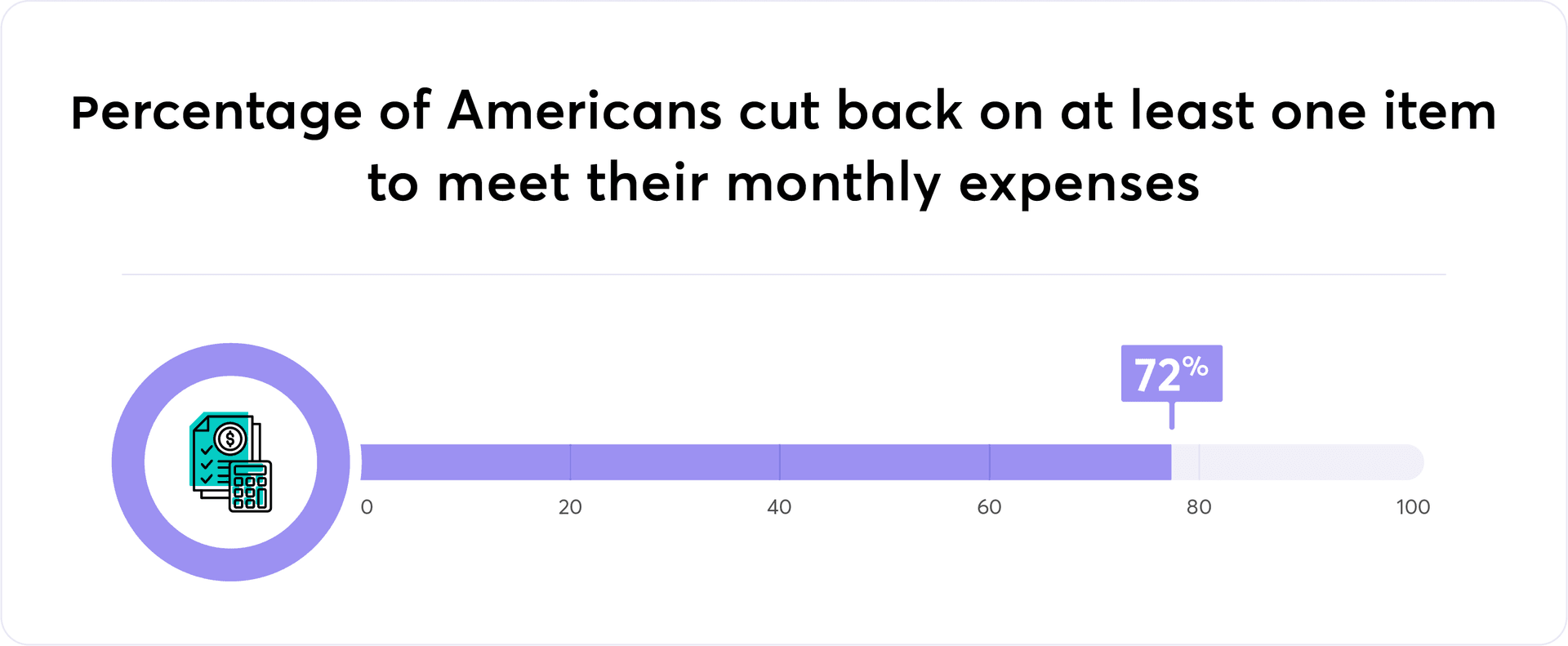
Labor market
Complicating matters is that the national unemployment rate remains very low, ranging from 3.5 to 3.7 percent between March 2022 and November 2022, per the Bureau of Labor Statistics. Economists say this is below the typical rate of unemployment, and we would need to see it rise to bring down inflation. However, unemployment rates were also low the last time inflation was considerably lower, in 2019. The labor market is tighter today.

Typically, inflation means the labor market is generally very competitive for most small businesses. Flat real wages can make it easier for small businesses to offer the attractive wages necessary to recruit new employees. However, the larger economic environment in 2022 brought a new set of challenges.
In today’s market, small businesses are struggling to keep up with the wages and benefits larger companies can offer. Furthermore, small businesses are no longer only in competition with local companies. They’re also competing with small businesses that offer flexible remote work across the country. Recent ADP payroll data also found that small business growth was declining in the second quarter of 2022. As a result, many business owners were forced to forego recruiting efforts, lay employees off and make do with staffing shortages.
Work quality
Employee productivity can also suffer as a result of wage stagnation and inflation. It’s not uncommon for new businesses to hire freelancers for a contracted period of time or to work with a small team. Whether they’re full-time employees or contractors, they will feel the impact of inflation and may feel less inclined to put the same amount of effort into their work. There’s also the risk of them leaving for more stable, established companies that can offer more competitive wages in the face of change.
Financing
In economic climates like this one, borrowing money becomes more expensive, which can make it difficult for a new business to invest in its future or for an entrepreneur to get their business off the ground. Loans may be more difficult to come by without a sufficient financial track record. If entrepreneurs have secured some of the best business loans but not at fixed rates, interest rates will add to business expenses and impact profits. Also, many investors pull back on investing in new businesses when inflation hits, opting instead for something less risky.
Additionally, given the current environment, it’s more difficult for people to pay back their loans, and they could end up in further debt. The stagnation in real wages, currently accompanied by inflation, represents a threat to consumer savings, debt repayment and spending in the wider economy.
Stagnant real wages can slow progress
Entrepreneurs and small businesses face many of the same challenges as long-standing businesses, including supply chain issues, limited cash flow and a reduction in consumer spending. As the cost of supplies and raw materials go up, business owners must pass that cost along to customers. This can prove difficult for newer companies that don’t yet have a strong customer base and good brand awareness.
Stagnant real wages have been an issue for more than a decade, but in today’s environment, they’re more concerning for small businesses. These organizations are left to compete with larger organizations — not only for customers and supplies but for talent. The additional pressure caused by less cash flow and purchasing power can lead to a decline in profitability.














